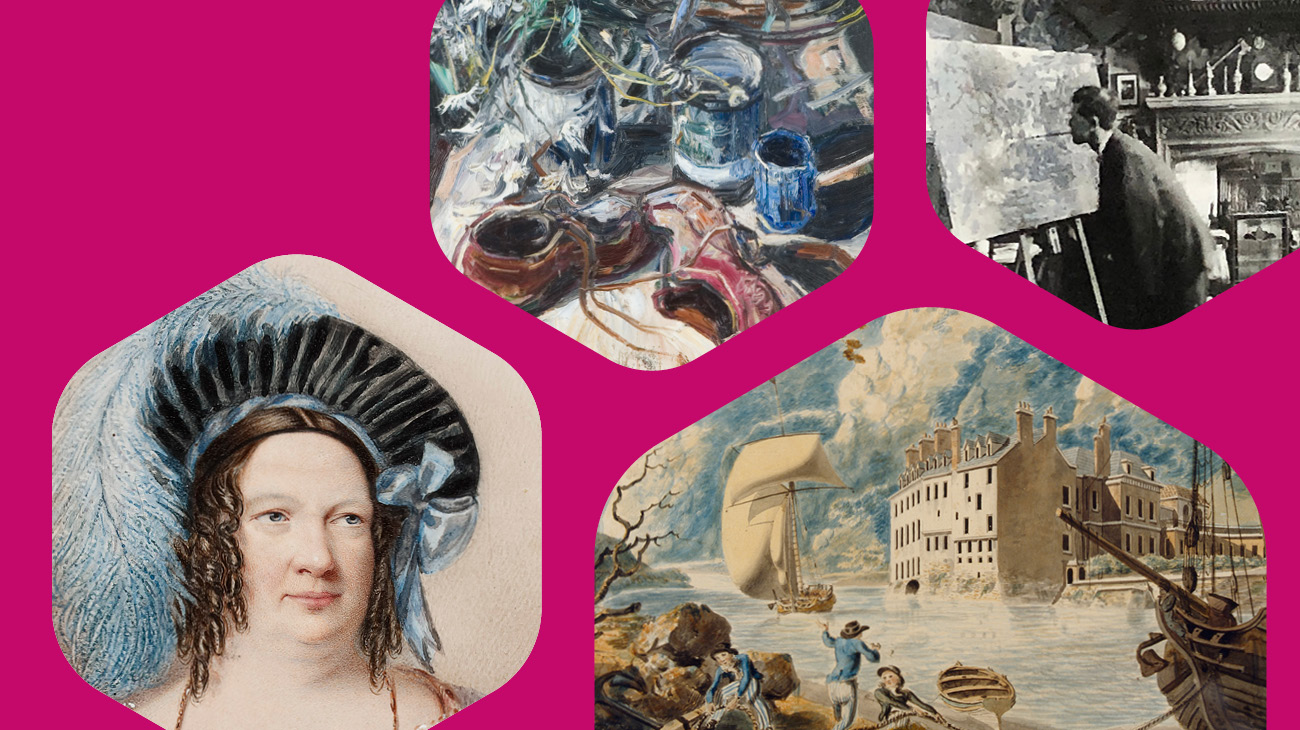
I am late in drawing attention to the above exhibition, “Concealed/Reveal”, currently running at Bristol Museum and Art Gallery until 21 April 2024. I have been to see it twice, first because I was involved in a minor way in the original concept, “Curating for Change” and secondly because I have a personal interest in disability.
The display is summed up by the following paragraph:
Disability is often seen as a dirty word, an insult or something to conceal instead of what it is – people’s life experience and not a shameful secret. It can be a creative force pushing artists to tell new stories or develop new ways of creating. The artists featured were all influenced by disability, D/deafness or neurodivergence in some way.
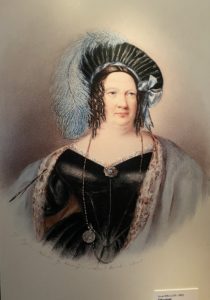
Sarah Biffin. She loved fashion, and her flamboyant self-portrait suggests confidence.
I joined the group by mistake, under the impression it was about the history of disabled people. I soon realised I was out of my depth, the work of curating an exhibition being a complete mystery to me and as for art, “I know what I like”. Most of the time I felt I was an irritating Devil’s Advocate among academics who knew what they were talking about.
My view is that artists make art, sculptors sculpt, painters paint, potters pot, and writers write. Because they can’t help it. (It doesn’t matter whether they are any good or not, are able or disabled. They are self-centred and annoying to those who can’t understand this.)
I recently watched the film “Maudie” a biopic of the Canadian folk artist Maud Lewis who was crippled and deformed by arthritis. Despite constant pain, ridicule, poverty, primitive living conditions in the back of beyond, the surly toleration of her husband, portrayed as someone with issues of his own, who grudgingly allowed her to carry on (provided she did her chores first), with her life’s work of painting pictures on every available scrap of paper, wood, wall, or other surface. She would surely have painted even without her disability. She followed a different inner light which drove her compulsion to create. She did not seek recognition, and no-one would have heard of her at all had it not been for a lucky meeting in her final years.
Thankfully we have left behind such Victorian sanctimony as “The Guild of the Brave Poor Things”, a branch of which operated in Bristol in 1894, (badges were issued to participants with the legend in Latin, “Happy in my Lot”. Yuk) but credit where credit’s due, and I don’t see anything wrong in being in awe of those who carry on despite multiple disadvantages, like Maud Lewis, or like Sarah Biffin, 1784-1850, featured in the exhibition, a celebrated miniaturist who:
…was born without arms and with undeveloped legs. She taught herself to paint using an adapted brush attached to her stump.
It is not clear whether this was a “stump” of an arm or one of her undeveloped legs, though most online articles state that she painted with a brush in her mouth. She was less than three feet tall, and from the age of about thirteen, spent many years exhibited as a fairground “curiosity” who as a bonus could supply a quick sketch “while you wait” for punters. She has a one-line mention in Thomas Hood’s ballad, “The Mermaid of Margate”, who seduces a fishmonger:
With one half on the land,
the other on the shore
his hair began to stiffen,
for when he looked where her feet should be,
she had no more feet than Miss Biffen!
Haha. Very funny. Sarah was famous enough for every reader to know who Hood meant.
After almost two decades with the travelling show, Sarah, with the help of patrons, was able to set up as an independent portrait painter. The Museum of Somerset at Taunton has recently acquired a self-portrait of Sarah. Her life deserves its own blog, but in the meantime, there is information online at

Lovely. The Iron Brake glowers like a monstrous mediaeval instrument of torture.
Without their talent, Sarah and Maud would probably have joined the forgotten millions of disabled people like those who were found “something useful” to do, at the Bristol Royal Workshop for the Blind, ca 1900. Lacking an ability for basketry, (weaving the end product, a task reserved for those more accomplished) they were destined to spend their lives “stripping the willow”, removing willow bark from a branch by rubbing it back and forth through an iron brake, “a tiring and repetitive task” explains the caption. I’ll say. Try it for an hour or two.

Leather shoes and gloves belonging to O’Brien and Boruwlaski. An artist imagines “the couple walking together in companionship.”
Whilst taking nothing away from the achievements of the painters featured in the exhibition, I am more interested in the artefacts on display, like the shoes and gloves once belonging to two contrasting men, Patrick Cotter O’Brien, well-known as The Bristol Giant, and Joseph Boruwlaski, who was afflicted with dwarfism. Their clothes and accessories had to be specially made allowing them to present as “gentlemen” in a society in which they were “other”.
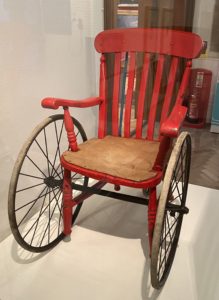
The wheelchair, a hybrid of a Windsor chair & pram wheels.
My favourite artefact dates from the mid-1900s, a home-made wheelchair, a hybrid of an armchair and a pair of pram wheels. (I have a similar high-backed Windsor chair, which others complain about, but I find comfortable. It once belonged to my great-grandparents). The wheelchair was made in Bristol, probably for a young girl, by a relative, a father for his daughter, or an uncle for his niece. The paintwork, in red and blue, the curators suggest is the way the unknown user “expressed her personality”. Six of one and half a dozen of the other, I would say.
My Dad had a club foot and, for almost his whole life, his boots, one surgical, one plain, for best, hobnails for work, were hand-made for him by his own father. I often heard him say “I never had a comfortable pair again after our father died.” Dad, Jack Pillinger, like the wheelchair maker also made things, usually “out of nothing”, but eminently serviceable, though the results lacked the finesse of the Museum exhibit. I cannot now remember with any absolute certainty which was his lame foot and deeply regret that we did not think to keep his boots when he died. This was not deliberate, just thoughtless. Such an oversight may explain why there are more paintings (respectable) than artefacts in the display. A lingering stigma attached to disability, which still exists, suggests to the bereaved that the deceased might prefer to be remembered in another way.
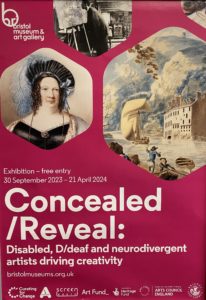 The idea that disability “drives” creativity remains interesting, though troubling. “The drive” in this case seems to be in the mind of whoever made the chair, rather than coming from the child. It was a labour of love. Someone who saw something that needed doing and did it. The exhibition’s strapline echoes an earlier adage: “Necessity is the mother of invention.” Braille or hearing aids being obvious examples.
The idea that disability “drives” creativity remains interesting, though troubling. “The drive” in this case seems to be in the mind of whoever made the chair, rather than coming from the child. It was a labour of love. Someone who saw something that needed doing and did it. The exhibition’s strapline echoes an earlier adage: “Necessity is the mother of invention.” Braille or hearing aids being obvious examples.
There are still plenty of people who make crass remarks, as in something I once heard on TV, a person who lost a leg in an accident, telling of a helpful tip he received: “Never mind, you’ll be able to go in for the Paralympics now!” (As Eric Morecambe could have said “There’s no answer to that!”). I passed on this gem at one of the meetings, wondering if it is a common belief that the loss of one general ability leads to compensating brilliance in another. Would sticking a paintbrush in the mouth of any person without arms, and saying “there you go, get on with it” have this effect? I suggest that the “success” rate is vanishingly small, whether the initial “driving force” is the disability itself, or is down to A.N. Other doing the pushing. Some, spurred and endowed with enormous determination, do succeed of course, perhaps not as spectacularly as the famous Helen Keller and Anne Sullivan, but how many disabled people repeatedly try and fail, rendered even more desperate through their added frustration?
On a personal note, I was very pleased to see a reference in the exhibition to something which others may find trivial, the difficulty for a disabled or deformed person to find clothes to fit.
….in some ways was easier in the 18th century as items were often commissioned from specialists and not mass produced. Nowadays, disabled people often customise clothing to enable greater comfort and self-expression.
The first line is debatable along class lines. The historical poor would have made do with any hand-me-downs they could get, whether disabled or not, whether they fitted or not, until the rags dropped off them……. (makers of historical dramas note) ……..
.…. and as for customising, well…. though I wear jewellery, I find floaty scarves a nuisance, they fall off my underdeveloped shoulder or drip into anything I am doing. Clothes shopping is a nightmare. Don’t get me wrong. I am not disabled. I have a deformity, Scoliosis, a curvature of the spine. If by some miracle I find a garment which does not cause discomfort to my back, or exaggerates it, it is usually in the men’s department, so I buy three which are identical. If I attend functions wearing what seems to be the same uniform again and again, I explain it is washed between appearances! You get used to not being elegantly dressed. Please don’t give me fashion advice, however well-meaning, and do not point to outfits in ads and say, “You would look nice in that.” I can admire them for myself – on other people, but not on me. Thank you, but I know.
Thanks to those who, during the meetings, put up with my layperson’s opinions, and especially to Tiane, who was probably partnered with me because from our foreign surnames they thought we were both Dutch and would therefore get on. We did. We have similar poetic souls and a sense of humour. We became very good friends.
And one last thing. My son, who kindly escorted me on my second visit to the Museum remarked
Who was the bright spark who had the good idea of putting an exhibition about disability on the top floor?



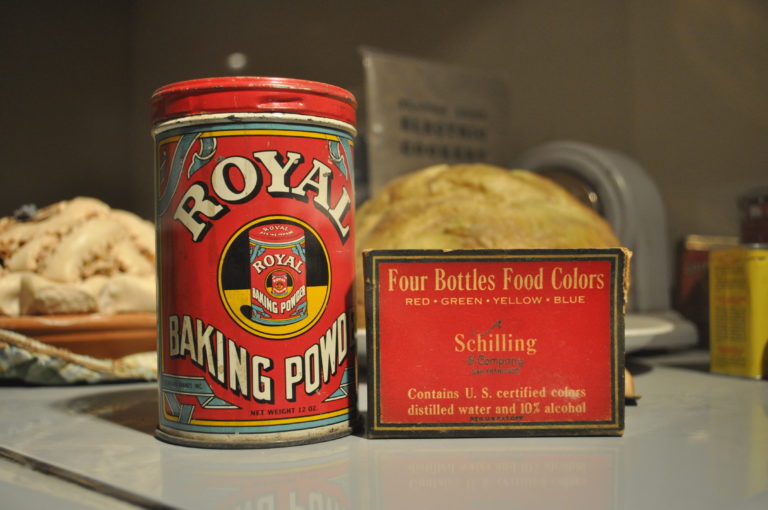
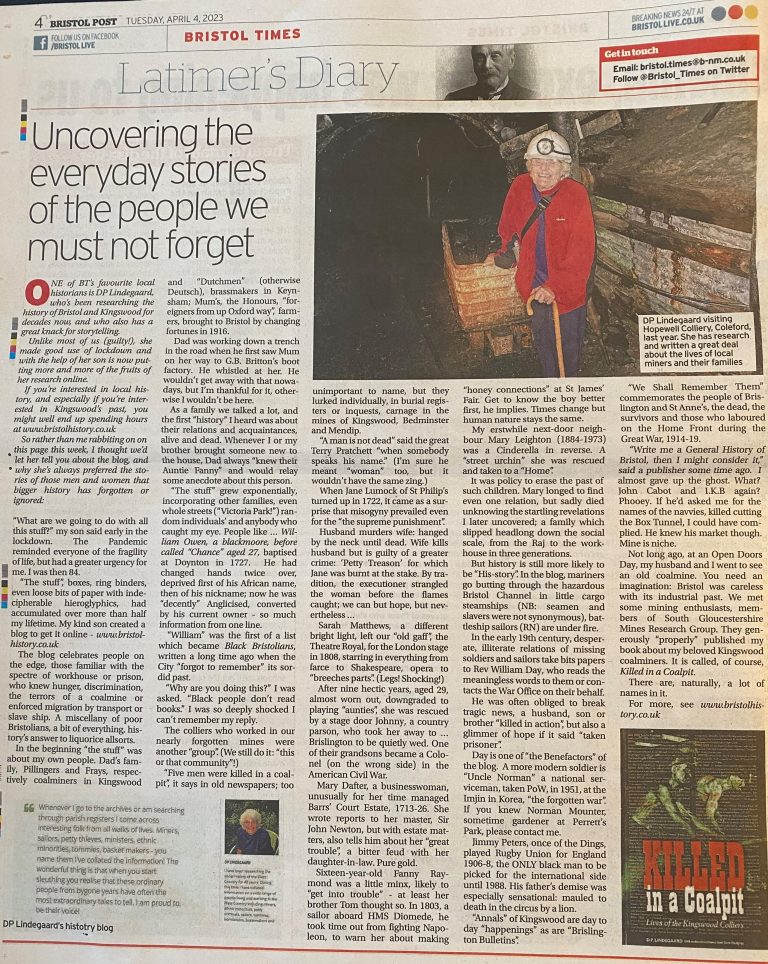
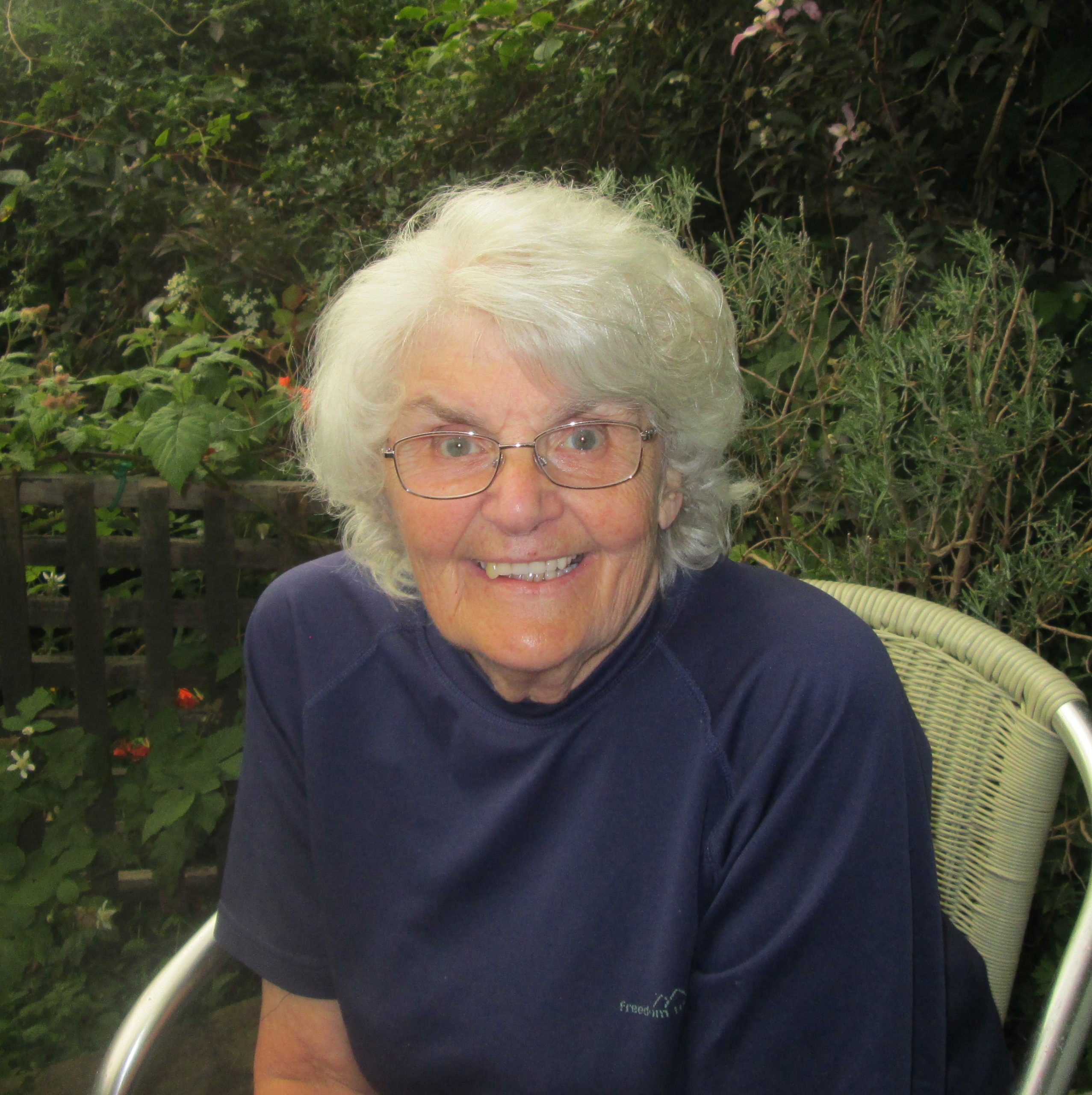



Blog Comments
Janice Willie
28th May 2024 at 8:04 am
An excellent article, well presented, very informative and thought provoking. Thank you.